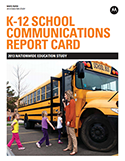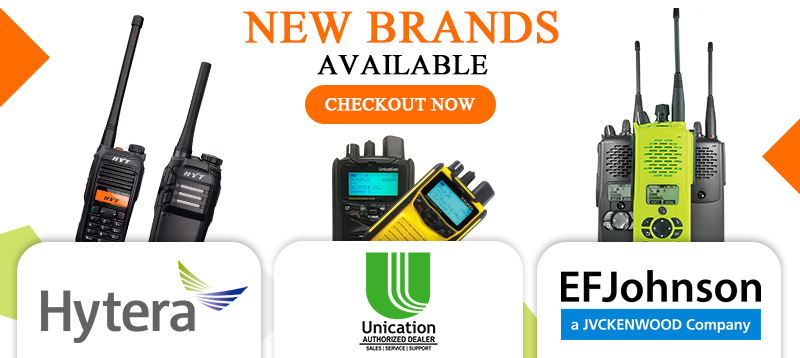K-12 School Communications Report Card
 Survey Participants
Survey Participants
Motorola’s 2013 study offers a valuable snapshot of the current state of communications in school districts across the country. Conducted in May and June, responses were gathered from a wide cross-section of K-12 schools and educational professionals in 43 states. Participants were rather evenly divided among different-sized districts, resulting in a good mix of U.S. schools.
Almost 45 percent of respondents were school administrators. Other participants included information technology (IT) and telecommunications, operations and maintenance, teachers and administrative staff, transportation and facilities directors, and safety and security management.
Survey Highlights
Results indicate that keeping students and staff safe and secure is top of mind for schools – with 99% of respondents saying this was their most important priority. This not only means preparing for disasters and weather events, but being able to respond and coordinate efforts instantly throughout the school or district. The mandate to improve safety extends beyond school property to keeping students safe on school buses, field trips and more.
Respondents confirm that using a reliable communications device with long battery life is another top priority. This was closely followed by having uninterrupted communications with everyone in the school or district. The research revealed that two-way radios are the primary means of communication for nearly half of the nation’s schools (40 percent as the main form; an additional six percent use radios along with email, text messaging, etc.).
Eighty-five percent have their own private two-way radio system and 15 percent lease access time. Interestingly enough, 22 percent use landlines, 16 percent cell phones and 15 percent the Internet, despite the potential for power failures, outages, weather events and stronger safe-driving laws restricting cell phone use. Additionally, the research found that insufficient funding is the main barrier to introducing or improving communication solutions.
Elementary and high schools in 26 states are receiving less state funding in the 2012-13 school year than they did last year, and in 35 states, school funding now falls below 2008 levels. As K-12 schools confront these budget shortfalls, they must be smarter about how they spend their dollars.
How Can We Help?
Not sure what you are looking for? The two way radio experts at Radio Express, Inc. can help. Request more information today.









